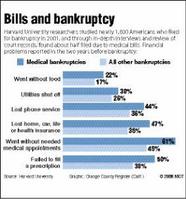
Welcome to 'America's Sweetest Town' - born, built and raised on sugar, a true workingman's community in the sweaty heartland of the Florida Everglades.
The Sugarland Highway slices through palm tree-lined downtown Clewiston, past the Cuttin Up Barber Shop, the Common Grounds coffee shop and the American flags flapping atop businesses and light poles.
The annual Sugar Festival draws thousands.
Cars sport bumper stickers reading "Sugar: Just 15 calories a spoonful." And Sugar Realty offers "the sweetest deal in town."
But with the announcement that Clewiston's dominant employer, US Sugar Corp, will likely go out of business in six years, many residents and workers are pondering life in a company town without a company and wondering how the community will survive.
Sale
Nearly 80 years after it formed here during the Great Depression, United States Sugar plans to sell some 300 square miles (777 square kilometres) around Clewiston to the state, which wants the land as part of its plan to clean up the Everglades wetlands. Agriculture, like sugar and citrus, has long stymied restoration efforts, blocking water flow and adding pollutants from fertilisers to the ecosystem.
The sale of the largest US producer of cane sugar means 1,700 workers will be left jobless, not to mention the spin-off effects on Clewiston businesses that depend on them as customers. US Sugar is the heart of Clewiston, literally - the town is built around the company's two-storey red-brick headquarters, and the mill is just down the road.
News of shutdown
News of the shutdown landed "somewhere between getting punched in the stomach and food poisoning," said Greg Thompson, 38, who has been with the company for 20 years and is head of the local sugar union.
"Everyone felt like the breath had been knocked out of them," Thompson said.
It is not all bad news for the workers, though.
Under the $1.75 billion deal, hourly employees will get a year's pay as severance, while salaried workers will get two years' pay. Since the company is partially employee owned, those who are vested will receive about $350 per share.
The company declined to provide details on how many shares an average employee owns. Thompson, who also would not reveal details, said employees were starting to count up their shares "to see if they'd be able to pick up and move somewhere else".
For many who have worked at the mill, on the railroad and in the fields for decades, the news was a stunner. The company kept its negotiations with the state secret. Employees were told about the deal with the rest of the world, through a news conference Tuesday.
"It's really something," said US Sugar railroad mechanic Tom Owens, 44, as he rubbed his hand firmly across his forehead, smearing the sweaty grit below his ballcap's bill.
Lives on sugar
"I'm third generation. This community lives on sugar," Owens said.
Ramón Iglesias, 36, manager of Roland Martins Marina and Resort alongside Lake Okeechobee, has lived his whole life in this town of 7,000.
"Clewiston is US Sugar and it always has been," Iglesias said.
In 1931, the town near the bottom centre of the state between coasts was a speck on the map, surrounded by rich, black soil, known as muck, that would later become its fortune.
Industrialist Charles Mott transformed the old bankrupt, and much smaller Southern Sugar Company into US Sugar. The company brought in sugar experts from Louisiana, Cuba and the West Indies, and by 1941, a profitable Florida sugar industry had emerged and the town began to take shape amid the tall, green stalks.
Twenty years later, when Fidel Castro stopped Cuban sugar imports into the US, the company began to boom, eventually operating two mills, a 200-mile (322-kilometre) railroad system and accumulating its land.
The demise of the company, which processes up to 800,000 tons of sugar a year, has rattled residents and business owners, who rely on sales to mill workers, field hands, mechanics and contractors.
But Clewiston has always been resilient, struggling back repeatedly from despair after drought, depression and a massive 1928 hurricane that killed an estimated 2,500 people in the region.
Opportunity amid despair
Many residents hope another industry, possibly a food processor, might come in and take over the high-tech mill. Maybe other large companies will eye the region as a cheap alternative to the high-priced coastal communities.
Or maybe the town's geography will again be its salvation, a big enough draw to establish a tourism-based economy.
"We've got Lake Okeechobee at our back door and the Everglades at our front door," Mayor Mali Chamness said. "And when we talk about America's sweetest town, it's not just because of the sugar that's grown here, it's because of the people."
Residents like Iglesias see opportunity amid the despair.
"I think in the long run it's going to be good for Clewiston," said Iglesias, who makes his living off folks who come to fish in Lake Okeechobee, the second-largest freshwater body in the contiguous United States.
"We're going to bounce back," Iglesias said, "and we're going to be stronger than before US Sugar got here."

- AP

